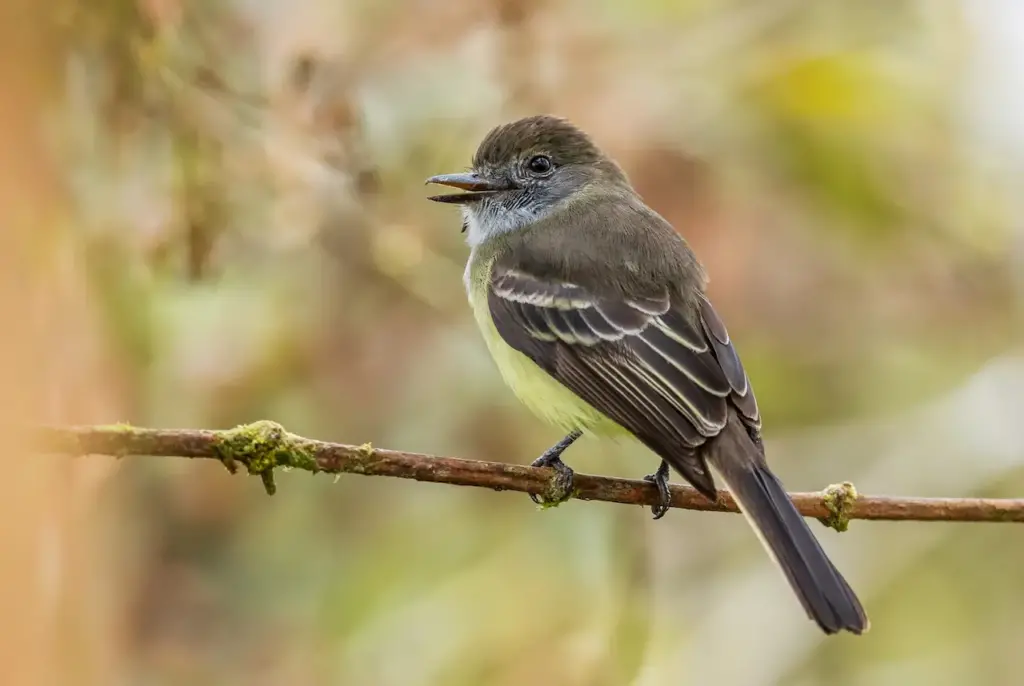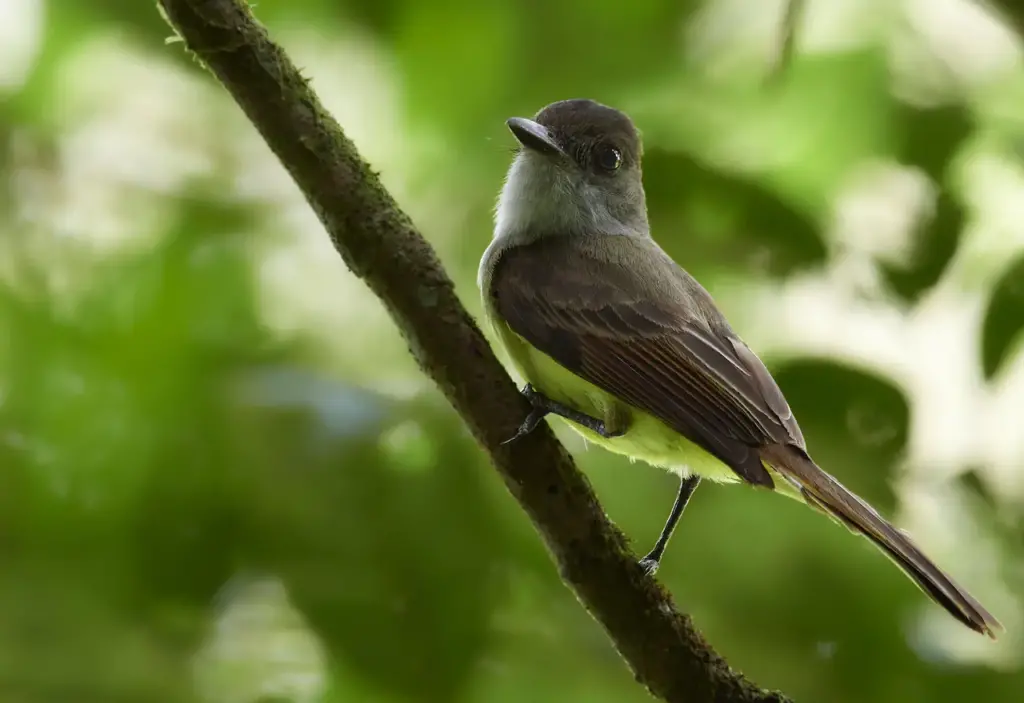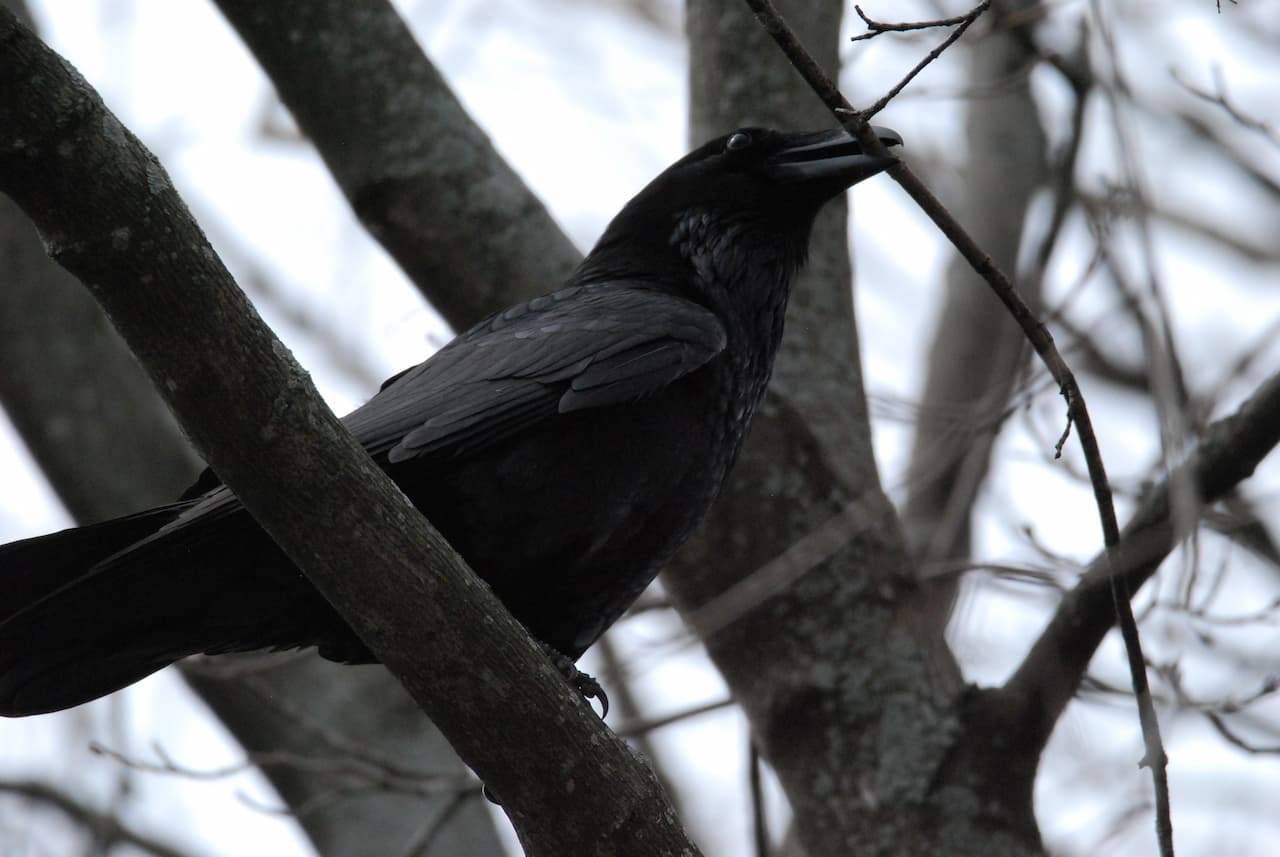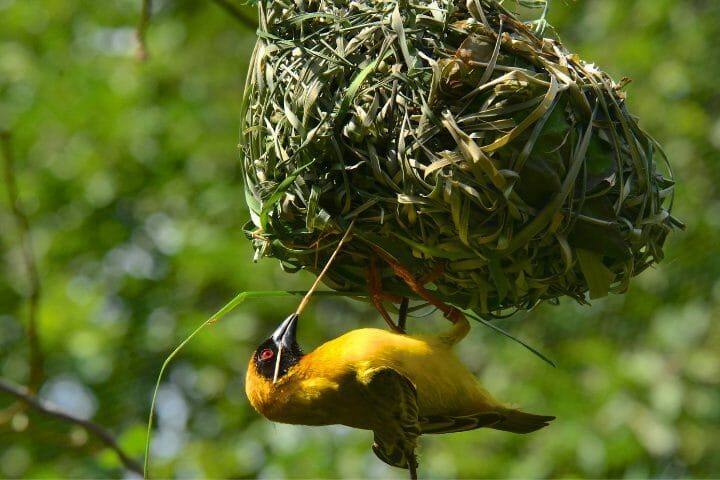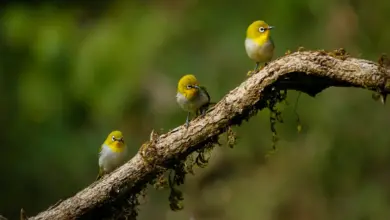The bird genus Myiarchus consists of tyrant flycatchers found in the New World (the Americas).
The members of this genus look very much alike and are very difficult to identify in areas where their ranges overlap. Some small visual differences exist in some of the subspecies, for which they were named. Others were named for their locale.

Description
These tyrant flycatchers are fairly large – measuring 6.3 – 9 inches (16 – 23 cm) in length. Their plumages range from brown to grey on the upper parts (including the head) and yellow to pale underparts. The tail is rufous to blackish in color.
They are usually found alone or – particularly when breeding – in pairs.
Some of them can be quite confiding and curious, and show little fear of humans. They may even enter buildings in their pursuit of insect prey.
Males and females look alike.
Subspecies and Ranges
- Rufous Flycatcher, Myiarchus semirufus
- Range: Peru
- Yucatan Flycatcher, Myiarchus yucatanensis
- Range: Belize, Guatemala, and Mexico
- Sad Flycatcher, Myiarchus barbirostris
- Range: Jamaica
- Dusky-capped Flycatcher, Myiarchus tuberculifer
- Range: Breed in southern Arizona and the Chisos Mountains in Texas, south to northern Argentina and on Trinidad. Those breeding in America migrate south to Mexico for the winter. Southern populations are resident (non-migratory).
- Swainson’s Flycatcher, Myiarchus swainsoni
- Range: Argentina, Bolivia, Brazil, Colombia, Ecuador, French Guiana, Guyana, Paraguay, Peru, Suriname, Trinidad and Tobago, Uruguay and Venezuela
Pale-edged Flycatcher
- Range: Argentina, Bolivia, Brazil, Colombia, Ecuador, French Guiana, Guyana, Paraguay, Peru, Suriname, Trinidad and Tobago, Uruguay and Venezuela
- Venezuelan Flycatcher, Myiarchus venezuelensis
- Range: Northeastern Colombia, northern Venezuela and Tobago
- Panamanian Flycatcher, Myiarchus panamensis
- Range: Colombia, Costa Rica, Panama and Venezuela
- Short-crested Flycatcher, Myiarchus ferox
- Range: Argentina, Bolivia, Brazil, Colombia, Ecuador, French Guiana, Guyana, Paraguay, Peru, Suriname, Uruguay and Venezuela.
- Pale-edged Flycatcher, Myiarchus cephalotes
- Range: Bolivia, Colombia, Ecuador, Peru and Venezuela
- Sooty-crowned Flycatcher, Myiarchus phaeocephalus
- Range: Ecuador and Peru
- Apical Flycatcher, Myiarchus apicalis
- Range: Colombia
- Ash-throated Flycatcher, Myiarchus cinerascens
- Range: Western United States to central Mexico
- Nutting’s Flycatcher, Myiarchus nuttingi
- Range: Breed from western Mexico to northwest Costa Rica. Occasional vagrant to southern California and southern Arizona in the United States.
- Great-crested Flycatcher, Myiarchus crinitus
- Range: Eastern North America. Migrate to Mexico and South America, such as Florida and Cuba for the winter.
- Brown-crested Flycatcher, Myiarchus tyrannulus
- Range: Breed in southern California, southern Nevada, central Arizona, and southern Texas southward to Argentina and Bolivia, and on Trinidad and Tobago. Those breeding in the United States migrate to southern Florida or to Mexico for the winter.
- Grenada Flycatcher, Myiarchus nugator
- Range: Found in Grenada and Saint Vincent and the Grenadines
- Galapagos Flycatcher, Myiarchus magnirostris
- Range: Galápagos Islands
- Rufous-tailed Flycatcher, Myiarchus validus
- Range: Cayman Islands and Jamaica
- La Sagra’s Flycatcher, Myiarchus sagrae
- Range: Cuba, the Bahamas, and Grand Cayman in the West Indies. Occasional vagrant to southern Florida.
- Stolid Flycatcher, Myiarchus stolidus
- Range: Cayman Islands, the Dominican Republic, Haiti, and Jamaica
- Lesser Antillean Flycatcher, Myiarchus oberi
- Range: Barbuda, Dominica, Guadeloupe, Martinique, Saint Kitts and Nevis, and Saint Lucia.
- Puerto Rican Flycatcher, Myiarchus antillarum
- Range: Puerto Rico
Dusky-capped Flycatcher
- Range: Puerto Rico
Nesting / Breeding
Their nests are constructed of vegetable matter and are typically placed into the cavities of trees or cacti – and in recent years these birds appear to have adapted to living in urban areas by nesting in hollow concrete power-line poles, accessing the hollow from the opening at the top.
These nests are lined with soft plant material, feathers (such as chicken feathers), feathers down, and hair.
A clutch consists of 3 – 5, up to 6 brown-marked buff eggs. The young fledge when they are about 13 days old.
Diet / Feeding
They mostly eat flying insects caught by flycatching amongst the middle branches of trees; as well as caterpillars and other sedentary arthropods. They may also feed on the ground.

